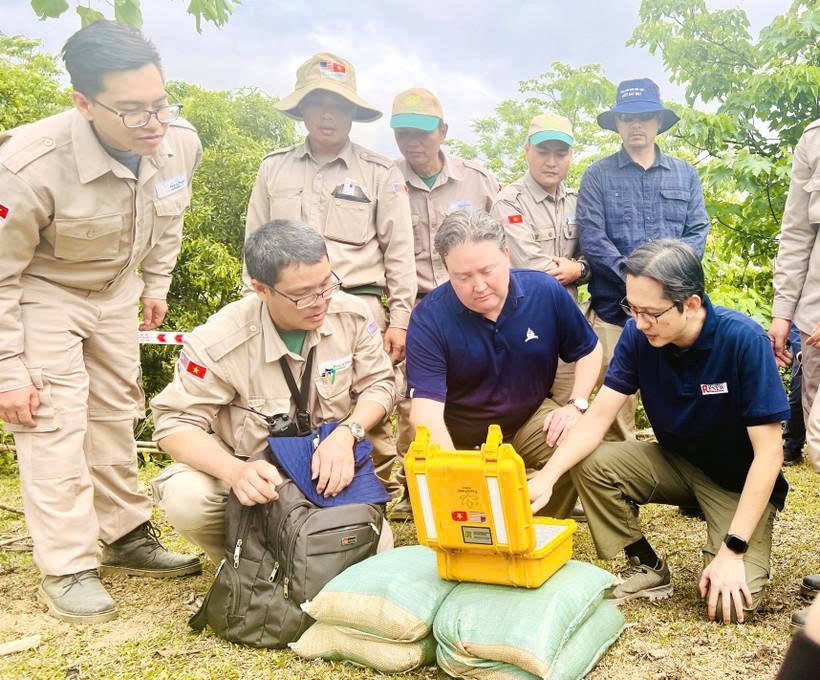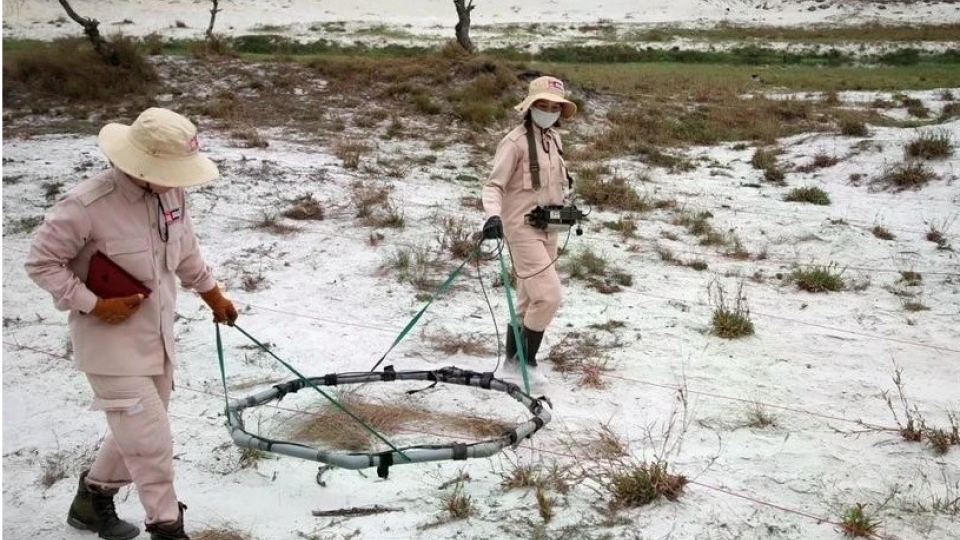Vietnam, US see encouraging results in settling war consequences
Three decades of joint efforts to address the lasting impacts of Agent Orange/dioxin and unexploded ordnance (UXO) have helped build trust and deepen Vietnam–US ties.

The year 2025 marks two important milestones: the 30th anniversary of the normalisation of diplomatic relations between Vietnam and the US (1995–2025) and the 50th anniversary of the end of the war (1975–2025). This is not only a time to commemorate historic turning points but also a moment to reflect and further advance substantive cooperation between the two countries, especially in addressing the legacies of war, one of the most important pillars of the bilateral relationship.
The two former adversaries have worked together to tackle the lasting impacts of the war, including UXO detecting and clearance, the search for those missing in action, and dioxin/Agent Orange remediation. These efforts have become a foundation of the Vietnam–US relationship, helping to elevate it to a Comprehensive Strategic Partnership.
In a pre-recorded video message shown at a seminar on 50 years since the end of the war and the journey toward peace and reconciliation, former US Senator Patrick Leahy, who has played a vital role in advancing US–Vietnam cooperation on war legacy issues, highlighted some of the worst legacies of the war have lasted long after the fighting stopped, including Agent Orange/ Dioxin contamination, landmines and other unexploded bombs, people with severe physical and cognitive disabilities and hundreds of thousands still missing.
According to the former Senator, for more than three decades, the US Democrats and Republicans in Congress, the US Agency for International Development (USAID), the Department of Defense, US veterans and participants in the War Legacies Working Group have worked together to address the war’s impacts, gradually rebuilding trust and strengthening ties with Vietnam.
Vietnam still faces a serious UXO problem, particularly from cluster munitions used by the US during the war. As of January 2025, according to the US Department of State, the US remains the single largest donor for UXO survey and clearance efforts in Vietnam, with total funding exceeding US$250 million since 1993.
The two governments established a formal cooperation framework in this area through a Memorandum of Understanding signed in 2013, further strengthened by a Joint Action Plan adopted in 2023. Since 1994, the US assistance has significantly reduced UXO-contaminated areas in central Vietnam, while also raising public awareness of UXO risks, improving livelihoods, and ensuring the safety of local communities.
Since 1991, through the USAID, the US government has provided more than US$155 million to improve the quality of life for persons with disabilities in areas heavily affected by Agent Orange/dioxin and UXO. This cooperation has continued to expand in both scale and depth. Notably, from 2011 to 2017, the US and Vietnam successfully completed a US$110 million dioxin remediation project at Da Nang Airport, funded by the US. Currently, the two countries are carrying out a much larger environmental remediation project at Bien Hoa Airport, which will span 10 years (2019–2029) with a total budget of US$450 million.
Speaking with the Vietnam News Agency's correspondent on the sidelines of the seminar, Charles Bailey, co-author of the book "From Enemies to Partners: Vietnam, the US and Agent Orange", emphasised that even half a century after the war’s end, painful war legacies such as Agent Orange and UXO still require urgent attention.
“There's still more to be done, whether it's unexploded ordinance or support for Vietnamese searching for and to identify those missing in action from soldiers during that time, or especially Agent Orange and UXO victims,” he said.
Expressing his particular concern for young Agent Orange and UXO victims - those who represent the future of Vietnam - Bailey emphasised the need to continue supporting them, both through material assistance and community capacity-building.
He praised the Vietnamese government for its long-term, large-scale efforts to support victims and stressed that continued US assistance - through both capacity-building and direct support - remains crucial in helping families overcome hardships and integrate into the country’s broader development.
“Let’s not let these people be left behind. That’s the point of American assistance for victims of Agent Orange and UXO,” he said.
He called on the US to continue its assistance for dioxin remediation until it is absolutely done, just like it had done with the Da Nang Airport project in 2017. According to Bailey, at Bien Hoa airbase, the dioxin cleanup will take considerably longer - perhaps 10 years.
Bailey stressed that seeing this effort through is essential, as it holds deep significance for the Vietnam–US bilateral relations.
As the two countries are marking 30 years of the normalisation of diplomatic ties, the occasion offers a chance to reaffirm humanitarian commitments and adapt cooperation strategies toward sustainable development—so that the war legacy settling efforts can stand as a testament to reconciliation and a fully transformed partnership.



